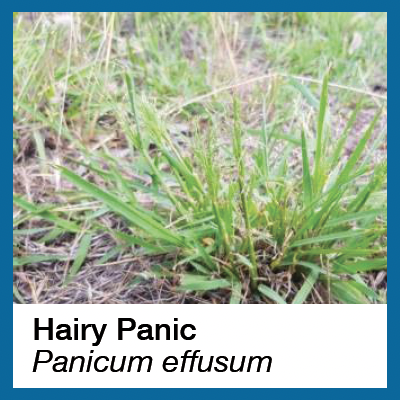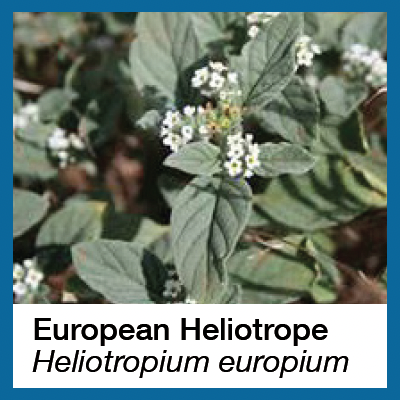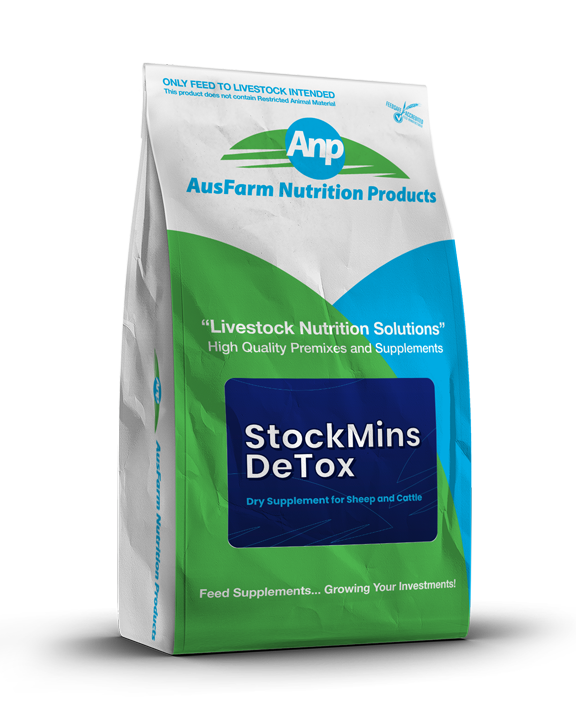Key Points
- Toxic weeds springing up in summer pastures and stubbles can be harmful to livestock
- Weeds can be the only green forage available in dry stubbles and pastures
- Common signs of toxicosis include red faces, yellow and weepy eyes and swollen head
- Immune response and tissue repair play a large role in managing toxicosis in livestock
- Toxin deactivators are effective at neutralising toxins before they can cause harm
 Toxic weeds can be harmful to livestock
Toxic weeds can be harmful to livestock
Signs of toxicity in stock when grazing toxic weeds in pasture and stubbles is a reoccurring issue for producers with weed control both difficult and costly. Weed control and management is an obvious step towards reducing the risks involved, as is controlling where and when stock graze weed-affected pastures. Despite this, there are many scenarios where total aversion is difficult. That is where toxin-binding agents, such as StockMins-Detox, come to the fore and prove their value to animal health.
Plant toxins are secondary metabolites that have largely evolved as defensive mechanisms to combat grazing pressure from animals. There are a vast number of different plant toxins that are of concern for ruminants when grazing weeds. Photosensitisation, jaundice, head, jaw, and eye swelling, and weight loss are all visible signs of plant toxicosis. These symptoms generally stem from a dysfunctional and damaged liver that can have long-term consequences for animal health, production, and welfare. The most encountered weeds that cause these concerns are Hairy Panic,  Heliotrope, Caltrop, Paterson’s curse, and Goosefoot.
Heliotrope, Caltrop, Paterson’s curse, and Goosefoot.
Bacterial toxins and mycotoxins are also naturally produced secondary metabolites created from certain fungal and bacterial species. There are many different types of mycotoxins and plant toxins, varying in their toxicity and lethality. Ruminants are less prone to mycotoxicosis compared to non-ruminants; however, their impact on animal health and production should not be understated. Mycotoxins can have a profound effect on the epithelial lining of the gut that can reduce immune function, and nutrient absorption and increase the risk of other pathogenic disorders (notably endotoxicosis from lipopolysaccharides).
Supplement with StockMins-Detox
 StockMins-Detox is a uniquely formulated, high specification, weatherproof, loose-lick supplement designed to reduce the effects of a broad spectrum of forage toxins in sheep and cattle.
StockMins-Detox is a uniquely formulated, high specification, weatherproof, loose-lick supplement designed to reduce the effects of a broad spectrum of forage toxins in sheep and cattle.
StockMins-Detox is the first product of its kind available for livestock grazing weeds in pastures and stubbles, and can reduce the effects of toxins in three distinct ways:
- Protecting against the absorption of a variety of harmful toxins
- Stimulates and supports enhanced liver function and gut integrity
- Assists with immunity, tissue recovery and tissue repair
StockMins-Detox has two broad modes of action against toxic insult DEFEND (within the animal) and DEACTIVATE (against the toxins).
Defending against toxins
Defending against toxic insult involves boosting the animal’s immunity, gut integrity, energy metabolism and repairing damaged tissue. This is achieved by supplying high levels of organic and inorganic essential trace elements (Co, I, Se, Mn, Mo, Zn) and vitamins, including high levels of vitamins E and C for their role in tissue recovery among other benefits. When the animal’s mineral, vitamin and trace element levels are at their highest and internal functions are performing at their best the animal’s defence against disease can be a significant factor when staving off toxic insult.
Deactivating toxins
Deactivating toxins is a large part of the process and involves the inclusion of specially designed ingredients and antioxidants that actively work to denature and mop up free radicals when toxic material is ingested. StockMins-Detox contains a high level of broad-spectrum toxin deactivators, clays and other specifically targeted binding agents to do this job. The combination of these ingredients actively helps to deactivate both mycotoxins and endotoxins in the gut before they can damage the gastrointestinal tract. Therefore, helping to sustain normal nutrient absorption and prevent immune activation caused by these degenerative changes.
In combination with these toxin deactivators, StockMins-Detox contains added sources of inorganic sulphur and molybdenum. Sulphur is added for its role in the detoxification of prussic acid in vivo to form thiocyanate, which can then be excreted in the urine. Molybdenum is present to ‘mop up’ excess dietary copper that could otherwise lead to chronic or acute copper poisoning in animals consuming large amounts of toxic alkaloids (hepatotoxins). Damage from the ingestion of hepatotoxins can cause the liver to alter its normal function thereby accumulating high levels of copper. Under conditions of stress, stored copper can be abruptly released into the blood, often resulting in death.
More Information
For more information about StockMins-Detox or for technical assistance in managing toxic insult in your flock or herd contact our team at Ausfarm Nutrition Products on 0412048055
Find a local preferred distributor of AusFarm Nutrition Products with our Distributor Map.